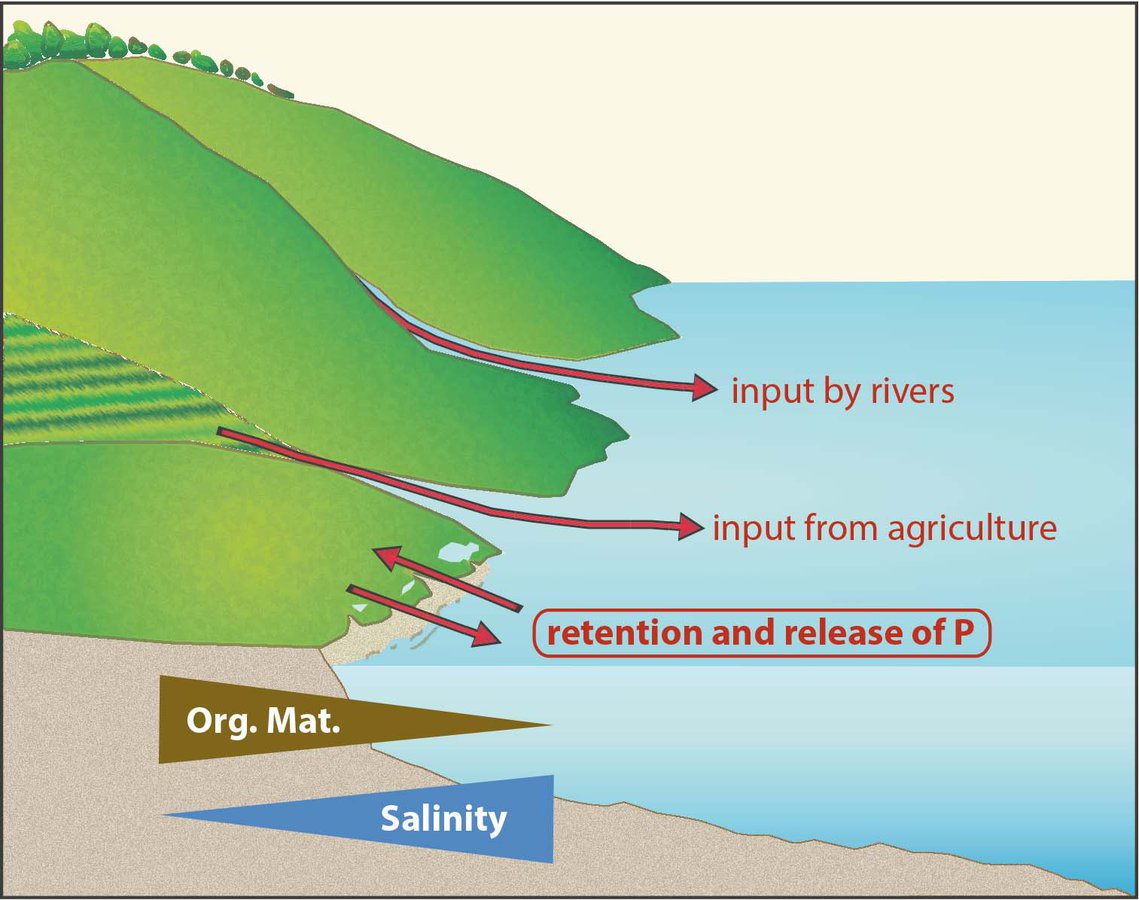B3: Microbial life and the phosphorus cycle along the terrestrial to marine gradient
supervised by Schulz-Vogt, Böttcher, Leinweber

Focus
Along the redox and salinity gradients from coastal peatlands into the Baltic Sea the size and biological availability of the different phosphorus pools are changing. However, the microbial influence on phosphorus cycling along the coastal ecosystem is not well understood. The topic aims for a comprehensive understanding of the dominating microbial processes and its controls.
State of the Art
The transport of phosphorus through the peatland and into the Baltic Sea is not simply dependent on the phosphate concentration of the water but is largely influenced by geochemical and microbiological processes, which can increase or decrease the amount of bioavailable phosphorus that is reaching the Baltic Sea. The microbial influence on the phosphorus cycling by accumulating polyphosphate has until now only been intensively studied in waste water treatment plants. Environmental studies especially in the marine environment are still sparse. There are first indications that environmental changes in redox potential can induce changes in the polyphosphate pool, but the influence of salinity as a stress factor has not been studied yet.
Work program
During the first phase of this project we will concentrate on the quantification of phosphorus accumulated and stored by bacteria in the form of polyphosphate. This pool will be quantified during different times of the year together with the relevant environmental parameters and the responsible bacteria will be identified. Total polyphosphate will be determined after staining with DAPI by determining the fluorescence of the yellow signal and by direct counts under the fluorescent microscope. Further, polyphosphate containing bacteria will be quantified and separated by flow cytometry after staining with tetracycline. The separated bacteria are then identified phylogenetically by sequencing of the 16S rRNA gene.
